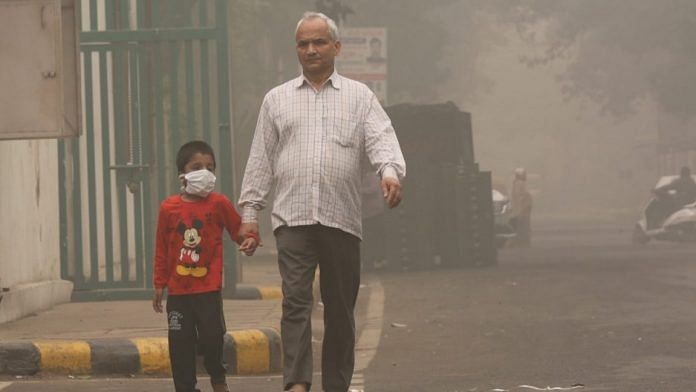New Delhi: Exposure to high levels of air pollutants may be linked to anaemia among children under five years of age in India, according to a new study by researchers from IIT-Delhi and Harvard University.
Anaemia is usually caused by iron deficiency and reduces the oxygen-carrying capacity of blood. The study, published on 7 January, noted that for every 10 micrograms per cubic metre increase in exposure to fine particulate matter (PM 2.5), there is a 1.90 per cent increase in average anaemia prevalence among children.
According to the researchers, this is the first study done to assess the association between PM 2.5 exposure and anaemia among children in India.
Air pollution is the third leading cause of death among Indians, according to a 2019 report by US-based organisation Health Effects Institute (HEI).
The researchers have also noted several other studies on how pollution was associated with cardiovascular and respiratory diseases among people, as well as low birth weight and stunted growth among children.
The study said that India has the largest burden of anaemia in the world, with the disease being especially prevalent among women and children.
Also read: Plasma therapy, if given early, could curb severe Covid symptoms in the elderly, study finds
Exposure to pollutants can induce systemic inflammation
Despite existing government programmes aimed at reducing iron deficiency through supplements and food fortification, the prevalence of the disease is still high in the country.
Chronic systemic inflammation — release of toxic immune cells — is the second leading cause of anaemia. Studies in the past have shown that exposure to air pollutants, especially PM 2.5, can induce systemic inflammation, the researchers said.
Based on this, the team hypothesised that long-term PM 2.5 exposure could be associated with decreased haemoglobin levels and increased odds of anaemia among children.
They also looked at district level satellite data on PM 2.5 levels and the National Family and Health Survey (NFHS-IV). The study showed that children exposed to higher levels of PM 2.5 had lower haemoglobin levels and higher odds of being anaemic.
While the study states that control of air pollution can help improve children’s health in India, further epidemiologic and toxicologic studies are needed to understand the relationship between pollution and anaemia, and the biological mechanisms that drive it.
Also read: India needs to tackle vaccine hesitancy, trust issues — clinical scientist Gagandeep Kang



